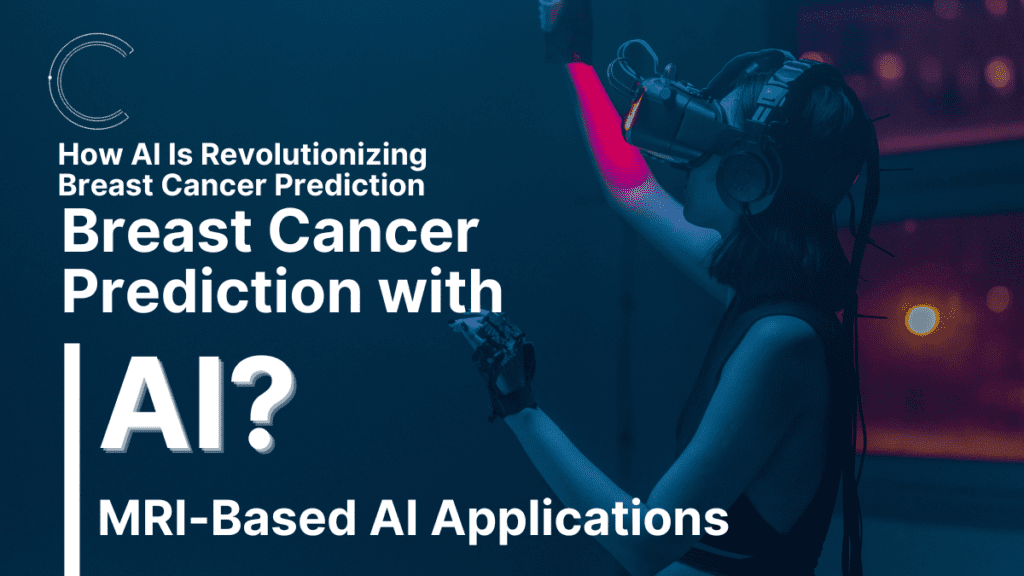Contents
How AI Is Revolutionizing Breast Cancer Prediction
Imagine a future where breast cancer can be detected much earlier, leading to higher survival rates and improved patient outcomes. Thanks to artificial intelligence (AI), this once-farfetched idea is becoming a reality. In recent years, AI has made significant strides in predicting breast cancer, revolutionizing the field of oncology. By leveraging advanced algorithms and machine learning techniques, AI is proving to be a powerful tool in early diagnosis and risk assessment. In this article, we will delve into the various ways AI is transforming breast cancer prediction, exploring its potential, limitations, and the impact it can have on improving women’s health.

Personalizing Breast Cancer Risk Assessment with AI
Breast cancer is one of the most prevalent malignancies worldwide, affecting millions of women each year. Early detection plays a crucial role in improving prognosis, but accurate risk assessment remains a complex task. This is where AI steps in. By analyzing vast amounts of patient data, AI algorithms can identify patterns and risk factors that may not be apparent to the human eye. This enables healthcare providers to personalize breast cancer risk assessment and develop tailored screening and prevention strategies for individual patients.
Identifying High-Risk Individuals
AI algorithms can sift through immense datasets, including genetic, lifestyle, and medical history information, to identify high-risk individuals. By analyzing numerous variables, such as age, family history, reproductive factors, and genetic mutations, AI algorithms can calculate an individual’s likelihood of developing breast cancer. This information can help healthcare providers prioritize high-risk individuals and optimize screening efforts, ensuring early detection and intervention.
Enhancing Diagnostic Accuracy
Mammography, the standard screening tool for breast cancer, is not infallible. False negatives and false positives are common, leading to unnecessary stress and potentially delayed diagnosis. AI-powered algorithms are changing this landscape by improving the accuracy of mammographic interpretation. By training on vast datasets of mammograms, AI models can learn to identify subtle abnormalities and aid radiologists in the detection of potential cancers. This collaboration between AI and radiologists demonstrates how technology can supplement human expertise, reducing diagnostic errors and improving patient outcomes.
Detecting Breast Cancer with AI Imaging Techniques
While mammography remains the gold standard, emerging AI imaging techniques are paving the way for additional screening methods that are non-invasive and equally effective. These techniques leverage AI algorithms to analyze various types of imaging data, including ultrasound and magnetic resonance imaging (MRI). The development of AI-enabled imaging tools holds immense promise for early detection and accurate diagnosis.
Ultrasound Image Analysis
Ultrasound is a widely available imaging modality that is radiation-free and suitable for women of all ages. AI algorithms can analyze ultrasound images to detect abnormalities indicative of breast cancer. With their ability to recognize subtle patterns and variations, AI systems can serve as valuable assistants to radiologists, providing a second opinion and eliminating potential human errors. Moreover, AI algorithms can predict the likelihood of a detected lesion being cancerous, aiding in decision-making regarding the need for further diagnostic interventions.
MRI-Based AI Applications
Magnetic resonance imaging (MRI) is a powerful diagnostic tool that provides detailed images of breast tissue. AI algorithms trained on large datasets of MRI scans can analyze these images with exceptional precision. By identifying minute changes and suspicious lesions, AI can assist radiologists in detecting breast cancer at earlier stages when treatment is generally more effective. Furthermore, AI algorithms can also predict the probability of malignancy for identified lesions, helping clinicians determine the most appropriate course of action.
Why Are Diabetic Ulcers a Health Threat? : Causes, Symptoms, and Treatment -7
Overcoming Challenges and Ethical Considerations
As with any emerging technology, there are challenges and ethical considerations associated with the use of AI in breast cancer prediction. Ensuring patient privacy and data security is paramount, as patient health records contain sensitive information. Striking the right balance between AI’s assistance and human expertise is crucial to avoid overreliance on technology. It is imperative that AI algorithms are constantly validated, updated, and transparent to gain confidence from healthcare providers and ensure safe and effective clinical implementation.
Conclusion
AI is ushering in a new era of breast cancer prediction, offering the potential for earlier detection and personalized risk assessment. By analyzing extensive datasets and leveraging advanced imaging techniques, AI algorithms are augmenting the capabilities of healthcare providers, improving diagnostic accuracy, and empowering patients. Nevertheless, it is important to recognize the limitations and ethical considerations surrounding AI implementation. With ongoing research, collaboration, and regulation, AI has the potential to redefine breast cancer detection and substantially improve outcomes for millions of women worldwide.
“Artificial intelligence is not a replacement for human expertise; it is a powerful tool that can enhance our capabilities in detecting and predicting breast cancer.”
Follow Us on X

